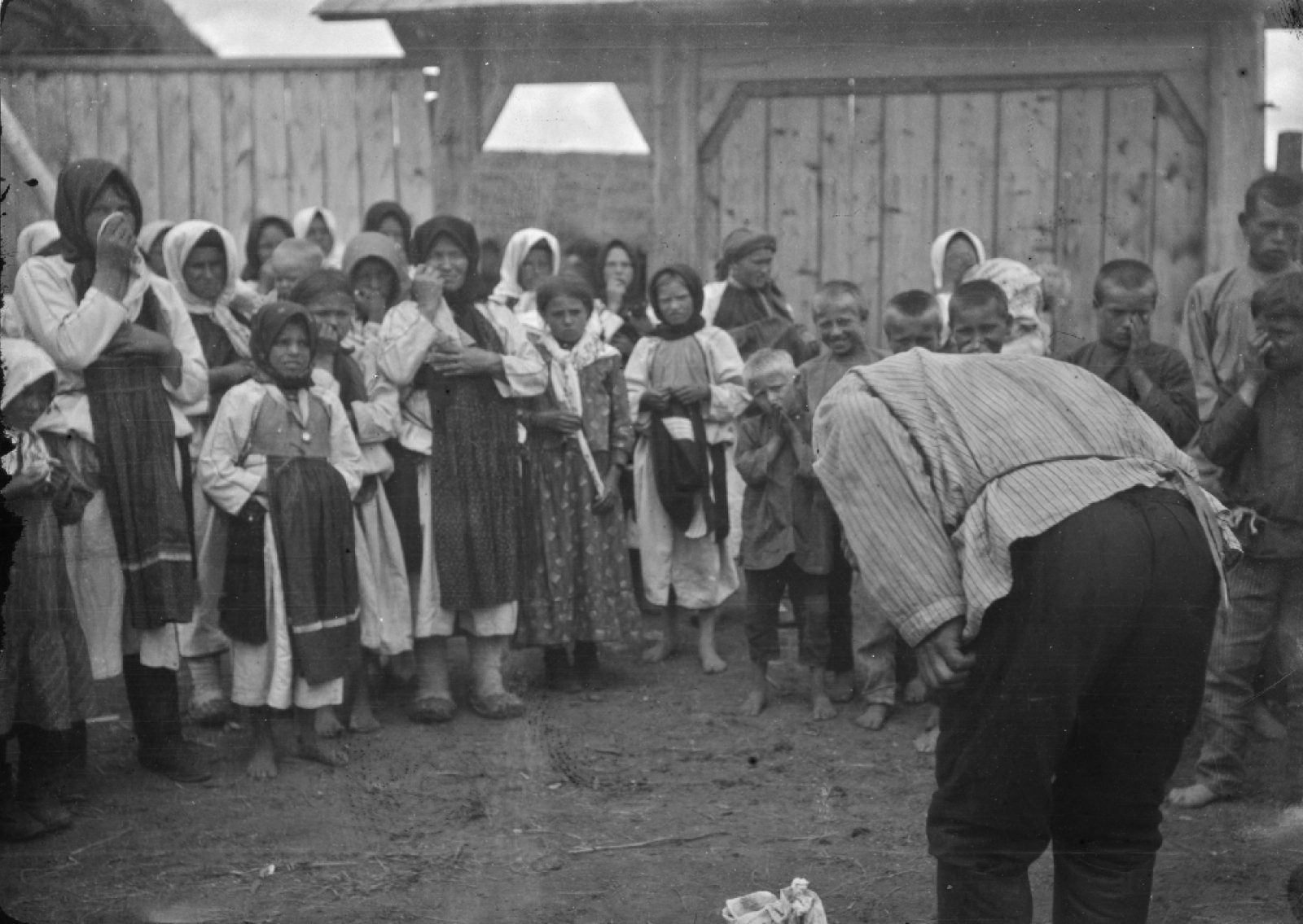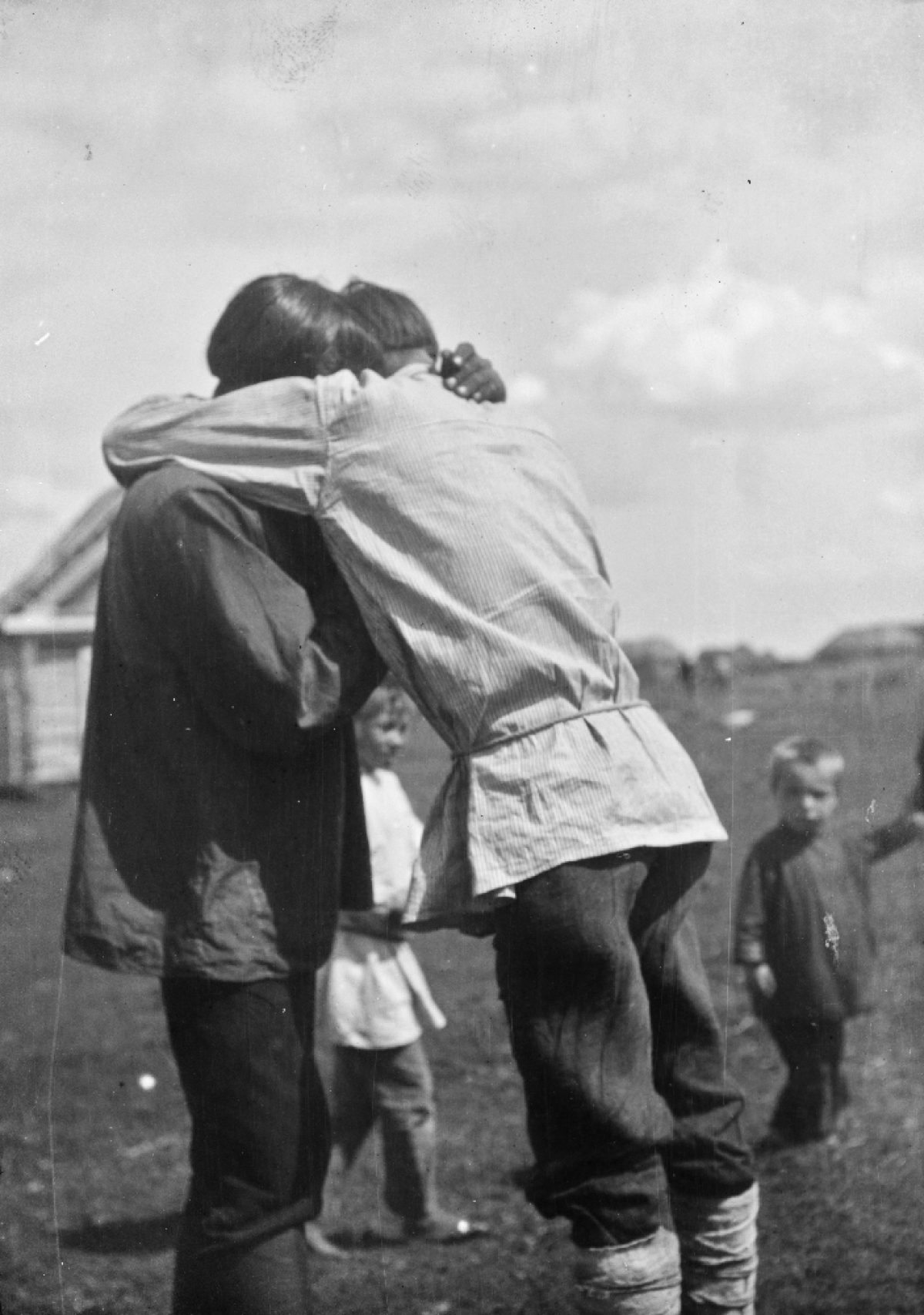
Goodbyes at the start of World War I
A. O. Väisänen recorded the start of World War I in Russia with his camera.
"The soldier (Andrey) says goodbye to his home, crossing himself and bowing in front of it. Vechkanovo, Buguruslansky District, Mordovia.” The note written in ink provides a caption for the print. The image shows women and children gathered at the front of the house, and Andrey, who has been called to war, is bowing in farewell to them and his home. The man’s face cannot be seen, but the faces of the people facing the camera reflect deep sorrow. This may be the last time Andrey sees his family and the familiar scenery of home. It is the late summer of 1914, and Russia has ordered a mobilisation. Only a few weeks have passed since the assassination of the Archduke Franz Ferdinand and his wife at Sarajevo, and the whole of Europe is becoming embroiled in war.
The photograph was taken by the young Finnish ethnomusicologist A. O. Väisänen (1890–1969) on an expedition to Mordovia in the summer of 1914. A. O. Väisänen is known for his work as a researcher and collector of Finnish folk music and the folk music of Finnic peoples. He had already started collecting folk music as a teen and went to several expeditions to record and research music during his career. He is remembered in particular for his many years of work in Setomaa, Estonia, but his travels also extended to Ingria, Viena and Mordovia.
In addition to a camera, he travelled with a phonograph, a primitive recorder that he used to record folk music. With his camera, he photographed many musicians in accordance with the subject of his research, but he also took pictures of ethnological subjects, such as buildings, women’s dresses, the ways the villagers spent their leisure time and village landscapes. In addition, he collected objects for the State Historical Museum, the current National Museum of Finland.
Väisänen’s expedition to Mordovia took an unexpected turn, when the unrest began in 1914. Gavrilo Princip fired the infamous shots in Sarajevo on 28 June 1914, and one by one, the European states joined the war. The effects of the war were soon visible, even in the remote villages. Mobilisation started in Russia right at the end of July. The news of war came to Väisänen in a newspaper at the Mordovia parsonage. When the mobilisation order arrived at the village, Väisänen momentarily became a recorder of a historical moment instead of a musicologist. He photographed the villagers’ rituals of departure, the sorrow of the wives and children and the wistful goodbyes of the men to their families, homes and friends. Soon after taking the photographs, Väisänen hurried back to Finland, because the conditions had become turbulent and the fate of his home country was hanging in the balance.
Väisänen’s photographs have been digitised as a part of the rescue digitisation project, in which the cellulose nitrate and cellulose acetate negatives in the Picture Collections of the Finnish Heritage Agency are being reviewed. Large amounts of unique research material have been photographed on these types of film, but the negatives slowly self-destruct- even in good storage conditions. Digitisation makes it possible to preserve the content of the photographs and make them visible in online services.
Sanna Särkelä
Kamera 8/2014

Childhood friends say goodbye before going to war in Vechkanovo, Buguruslansky District, Mordovia, 1914. Photo: A. O. Väisänen / Picture Collections of the Finnish Heritage Agency (SUK119:115)